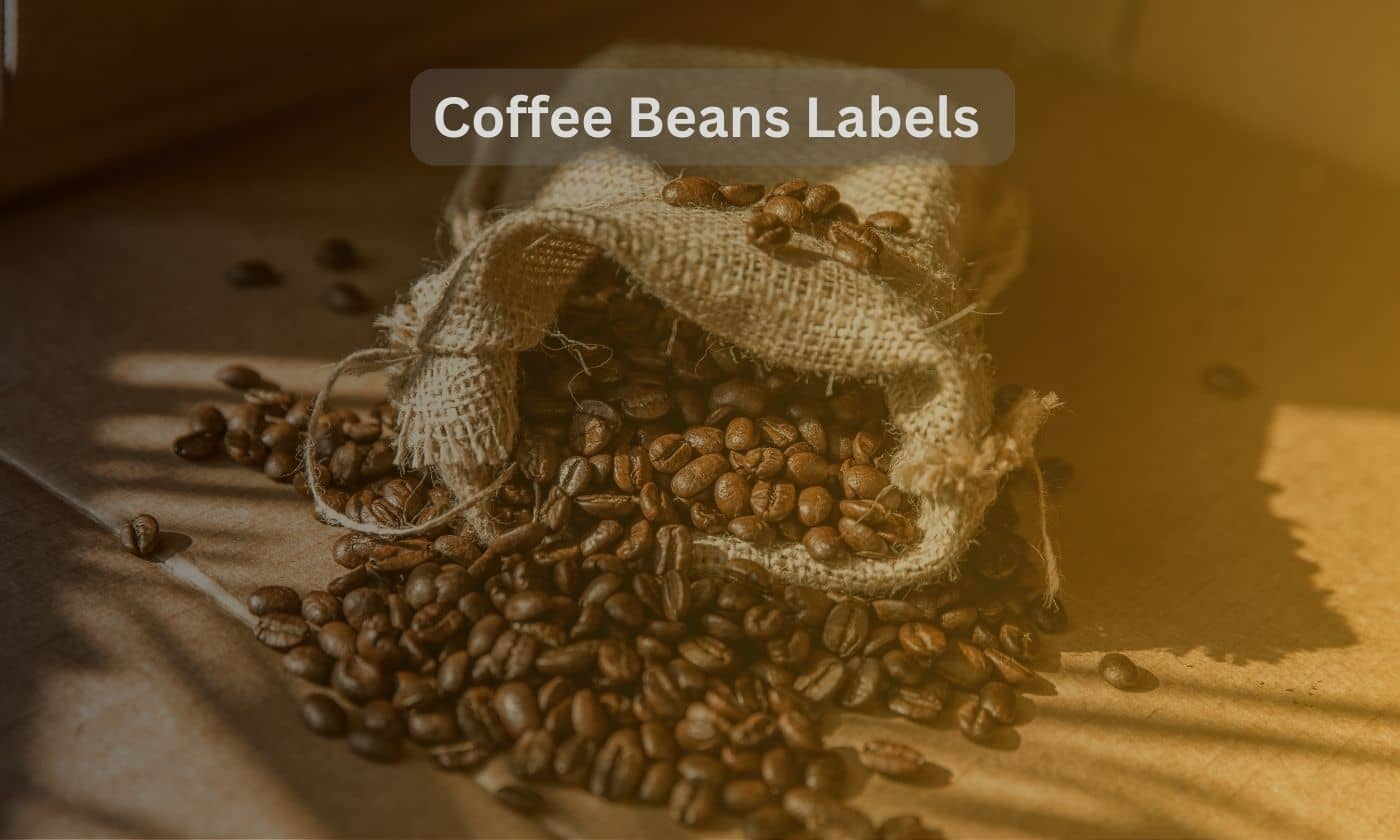Coffee bean labels are like secret codes that hold valuable information about the coffee you’re about to enjoy.
Understanding these labels can help you make informed choices and discover the perfect coffee for your taste buds.
In this article, we will unravel the mysteries behind coffee bean labels and decipher what they really mean.
I. What Are Coffee Bean Labels?
Coffee bean labels are informative stickers or tags attached to coffee packaging. They provide crucial details about the coffee beans, including their origin, roast level, flavor notes, certifications, and more.
These labels serve as a guide to help you navigate the vast world of coffee options and make decisions based on your preferences.
II. Origin and Source Information:
One of the critical aspects of coffee bean labels is the origin and source of information. Here’s what you need to know:
A. Country of Origin:
The country of origin refers to the region where the coffee beans were grown. Different countries have distinct coffee-growing regions known for their unique flavors and characteristics.
For example, Colombian coffee is renowned for its balanced flavor, while Ethiopian coffee offers fruity and floral notes.
B. Single-Origin vs. Blended Coffee Beans:
Coffee beans labeled as single-origin come from a specific country or region, allowing you to experience the unique flavor profile of that particular area.
On the other hand, blended coffee beans combine beans from multiple origins to create a harmonious and balanced flavor.
C. Fair Trade and Organic Certifications:
Coffee bean labels may also display certifications like Fair Trade and Organic. Fair Trade certification ensures that the coffee was produced in an ethical and sustainable manner, providing fair wages and working conditions for farmers.
Organic certification means the coffee was grown without the use of synthetic pesticides or fertilizers, promoting environmentally friendly practices.
III. Roast Level:
The roast level indicated on coffee bean labels determines the flavor and intensity of the coffee.
Here are the commonly used roast levels:
A. Light Roast:
Lightly roasted beans retain more of their original flavors, offering a brighter and more acidic taste profile. They often exhibit fruity and floral notes.
B. Medium Roast:
Medium-roasted beans strike a balance between flavor and acidity. They have a slightly darker color and offer a well-rounded taste with hints of chocolate and nuttiness.
C. Dark Roast:
Dark-roasted beans have a rich, bold flavor with low acidity. They are characterized by a deep brown color and often feature notes of caramel, chocolate, or smokiness.
IV. Flavor Notes and Descriptions:
Coffee bean labels often include flavor notes and descriptions that provide a glimpse into the taste experience.
Here’s what you might come across:
A. Fruity:
Fruity flavors encompass a wide range, from citrusy and berry-like notes to tropical and stone fruit flavors. These flavors add brightness and complexity to the coffee.
B. Nutty:
Nutty flavors bring a comforting element to the coffee, with hints of almond, hazelnut, or walnut. They provide a pleasant, mild sweetness.
C. Chocolatey:
Chocolatey flavors evoke the rich and velvety taste of cocoa. These notes can range from dark chocolate to milk chocolate, adding depth and richness to the coffee.
V. Certifications and Ethical Considerations:
Coffee bean labels may display various certifications that indicate ethical and sustainable practices.
Here’s what you should know:
A. Fair Trade:
Fair Trade certification ensures that the coffee was produced in a way that supports fair prices for farmers, safe working conditions, and community development.
By choosing Fair Trade coffee, you contribute to a more equitable coffee industry.
B. Organic:
Organic certification indicates that the coffee was grown without the use of synthetic pesticides, herbicides, or fertilizers.
It promotes environmentally friendly and sustainable farming practices, protecting both the farmers and the ecosystem.
VI. Roasting Date and Freshness:
Coffee bean labels often include the roasting date, which indicates when the beans were roasted. Freshness plays a crucial role in coffee flavor, so it’s important to consider the roasting date when purchasing coffee beans.
Coffee is typically at its peak flavor within a few weeks of roasting, so aim to consume it within that timeframe.
Conclusion:
Decoding coffee bean labels is like uncovering a treasure trove of information about the coffee you love. From origin and roast level to flavor notes and certifications, these labels provide valuable insights to enhance your coffee experience.
Next time you browse through coffee bean labels, pay attention to the details and let them guide you toward discovering new and delightful flavors.
Cheers to the journey of exploring the world of coffee, one label at a time.
Are you new to the world of coffee beans and want to learn more? Check out the Beginner’s Guide to Coffee Bean on Coffee Bean Hours to discover everything you need to know about selecting, brewing, and enjoying the perfect cup of coffee.
